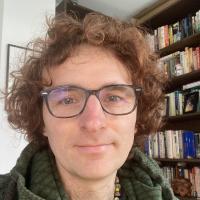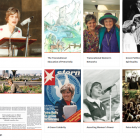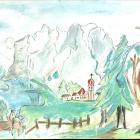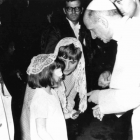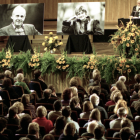Introduction
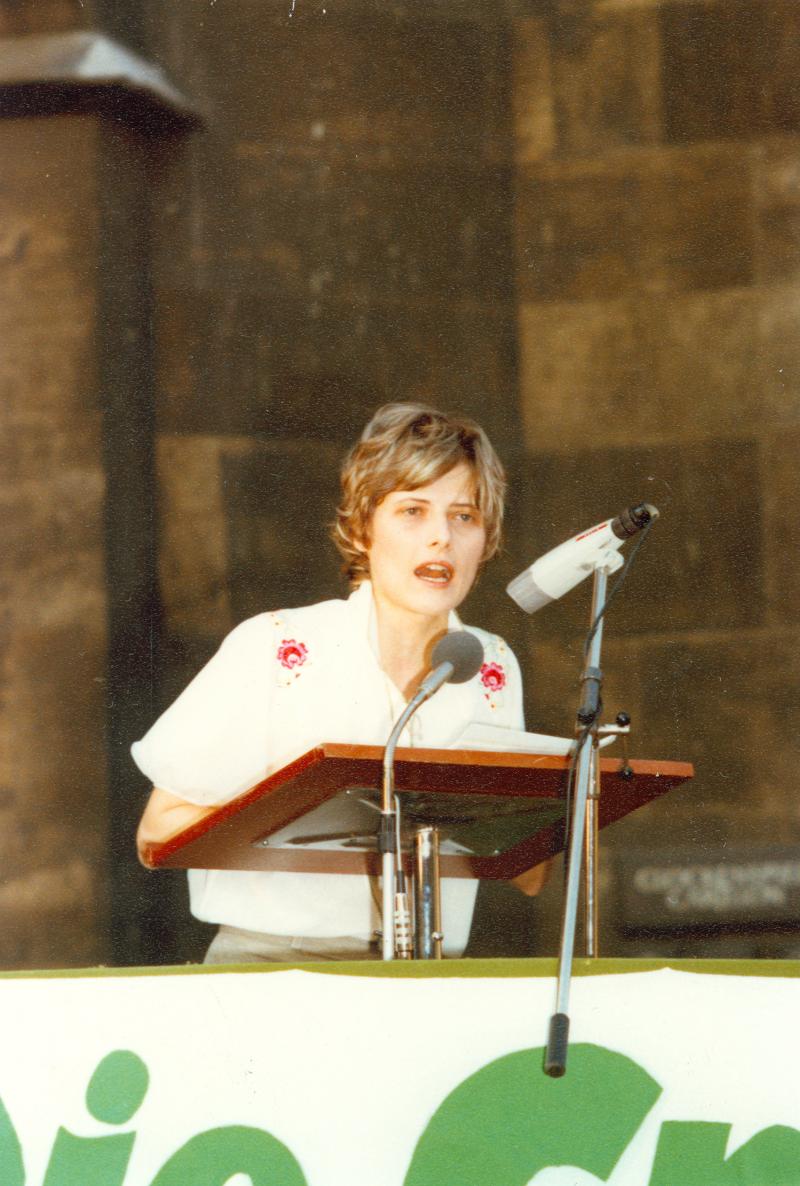
Figure 1. Petra Kelly speaks during a Green party campaign rally on Marienplatz in Munich, 18 May 1979.
Figure 1. Petra Kelly speaks during a Green party campaign rally on Marienplatz in Munich, 18 May 1979.
Unknown photographer, 1979. © Archiv Grünes Gedächtnis (signature: FO-01662-01). Used by permission.
The copyright holder reserves, or holds for their own use, all the rights provided by copyright law, such as distribution, performance, and creation of derivative works.
In Germany, Petra Kelly is remembered as a cofounder and early leader of the West German Green party, Die Grünen; she served as the party’s lead candidate in four early election campaigns, as party cochair from 1980 until 1982, and as cochair of the Greens’ first Bundestag delegation in 1983. From her perch in parliament, where she remained until 1990, Kelly advocated an alternative, holistic approach to politics based on nonviolence and love. She was critical of fellow Greens who, in what she perceived as a form of green realpolitik, advocated compromises on key issues in order to make Die Grünen a viable coalition partner. Instead, in a 1982 interview with the newsmagazine Der Spiegel, Kelly famously described Die Grünen as an “antiparty party,” which should serve as a “fundamental opposition within parliament” while continuing to support nonviolent direct-action protests outside of parliament. Indeed, Kelly’s ideas, her approach to politics, and her influence pushed beyond the boundaries not only of business as usual in the Bundestag but also of the party she had helped to found.
It is on account of her border-crossing approach to politics that Kelly is also known around the world today. Her transnational political biography enabled her to link together social movements and alternative approaches to life in the nuclear age in the United States, Europe, and beyond. Kelly delivered her speeches with the same vehemence and clarity, whether speaking in Munich in German (see figure 1) or in Washington in English (see figure 3). Her insistence on the interconnectedness of emancipatory struggles all over the globe challenged national political frameworks. Accordingly, the political scientist Ruth Bevan described Kelly as perhaps the first “global political theorist.” Her prefigurative approach to politics entailed a close connection between words and deeds, and caused Kelly to back up Bundestag speeches with direct-action protests on the floor of the parliament, across the Iron Curtain, and indeed all around the world. Hence, Kelly’s biographer Saskia Richter has argued that Kelly “is possibly the most important founding politician of Die Grünen and is one of the great politicians of her time in the former West Germany and in the international context of the alternative movements of the 1970s and 1980s.”
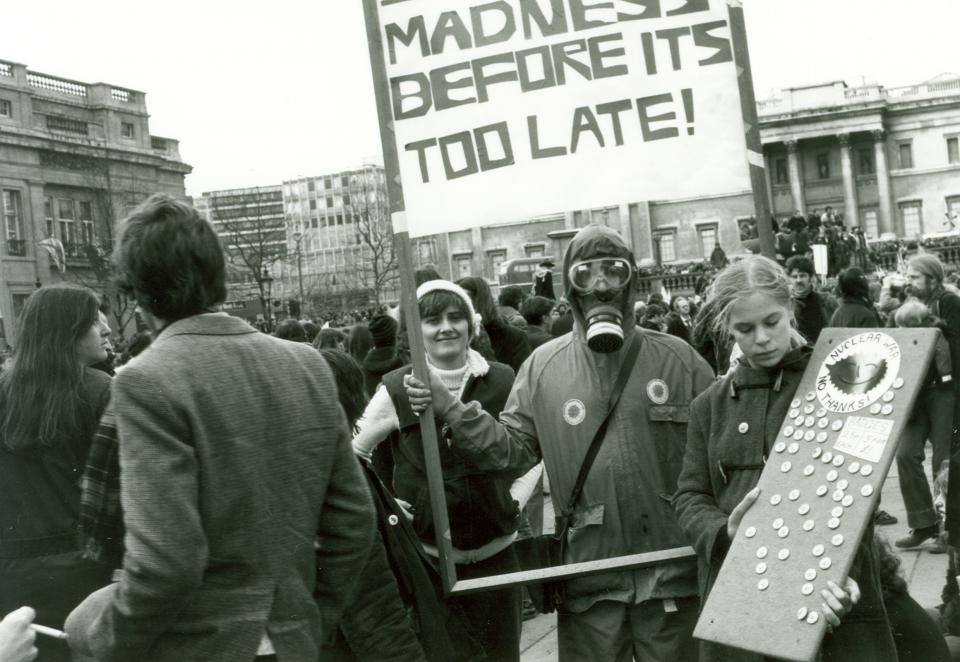
Figure 2. Petra Kelly at an antinuclear demonstration in London in April 1980.
Figure 2. Petra Kelly at an antinuclear demonstration in London in April 1980.
© Archiv Grünes Gedächtnis (signature: FO-01710-04). Used by permission.
The copyright holder reserves, or holds for their own use, all the rights provided by copyright law, such as distribution, performance, and creation of derivative works.
This virtual exhibition looks at Kelly’s life, her ideas, and her politics from beyond the framework of parliamentary work and party politics, showing how Kelly became an important figure not only in Germany but in many parts of the world. Following this introduction, the exhibition comprises six chapters and a timeline. It begins with a chapter on Petra Kelly’s transnational education, which reflects on the significance of Kelly’s experiences in the United States, the Netherlands, and Belgium for her political career. The following chapter maps Kelly’s transnational contacts, showing how her place within a network of women activists informed her understanding of environmentalism. The third chapter considers the interplay between Kelly’s spirituality and her understanding of transnational green politics, demonstrating how spirituality and religious influences helped Kelly to think beyond the constraints of national politics. The fourth chapter looks at how Kelly was depicted in the press in West Germany and abroad, revealing how press reporting shaped her image as a jet-setting, celebrity activist. Chapter five considers Kelly’s part in transnational antinuclear weapons and peace activism, showing how she engaged in non-traditional forms of activism that extended across the Iron Curtain and lasted beyond the hot phase of West Germany’s “New Peace Movement” in the early 1980s. A final chapter on the ways in which Kelly’s life and work have been remembered since she was murdered at the age of 44, in 1992, shows how her radical ideas and alternative approach to politics are gaining importance once again in the present day. Altogether, the exhibition sheds new light on the ways in which Kelly’s unorthodox approaches contributed to the revitalization of parliamentary democracy during her own lifetime and on the impulses for political and social transformation that Kelly’s ideas and visions continue to offer in the current era of environmental degradation and climate crisis.

Figure 3. Petra Kelly speaks at a small demonstration against the NATO Double-Track Decision at the fence of the White House in Washington on 7 July 1983. In the photo on the left, her partner Gert Bastian is seen holding a protest banner.
Figure 3. Petra Kelly speaks at a small demonstration against the NATO Double-Track Decision at the fence of the White House in Washington on 7 July 1983. In the photo on the left, her partner Gert Bastian is seen holding a protest banner.
© 1983 Lisa Berg. Used by permission.
The copyright holder reserves, or holds for their own use, all the rights provided by copyright law, such as distribution, performance, and creation of derivative works.
The examples of Petra Kelly’s international engagement included in this exhibition nevertheless represent only part of the bigger picture of Kelly as a global theorist and transnational activist. A complete picture of her worldwide political activities would also include, for example, Kelly’s commitment to Tibet or her travels to countries as diverse as India, Australia, and South Africa. Likewise, worthy of mention is her commitment to opposition groups in the Soviet Union and its satellite states, as well as disarmament efforts in both the West and the East, which took Kelly on trips to East Berlin, Moscow, and beyond. By introducing visitors to the transnational contours of Kelly’s biography and to some of the far-flung, transboundary networks in which she played a key part, this exhibition places one cofounder of Die Grünen into the global context in which she understood herself, her activist career, and her political work.
As a viewer of this exhibition, you are warmly invited to explore Petra Kelly’s global networks and transnational travels by following the structure of the chapters or to view each chapter individually based on your own preference and interest. Each chapter is self-contained and can be read or viewed independently.
- Previous chapter
- Next chapter



